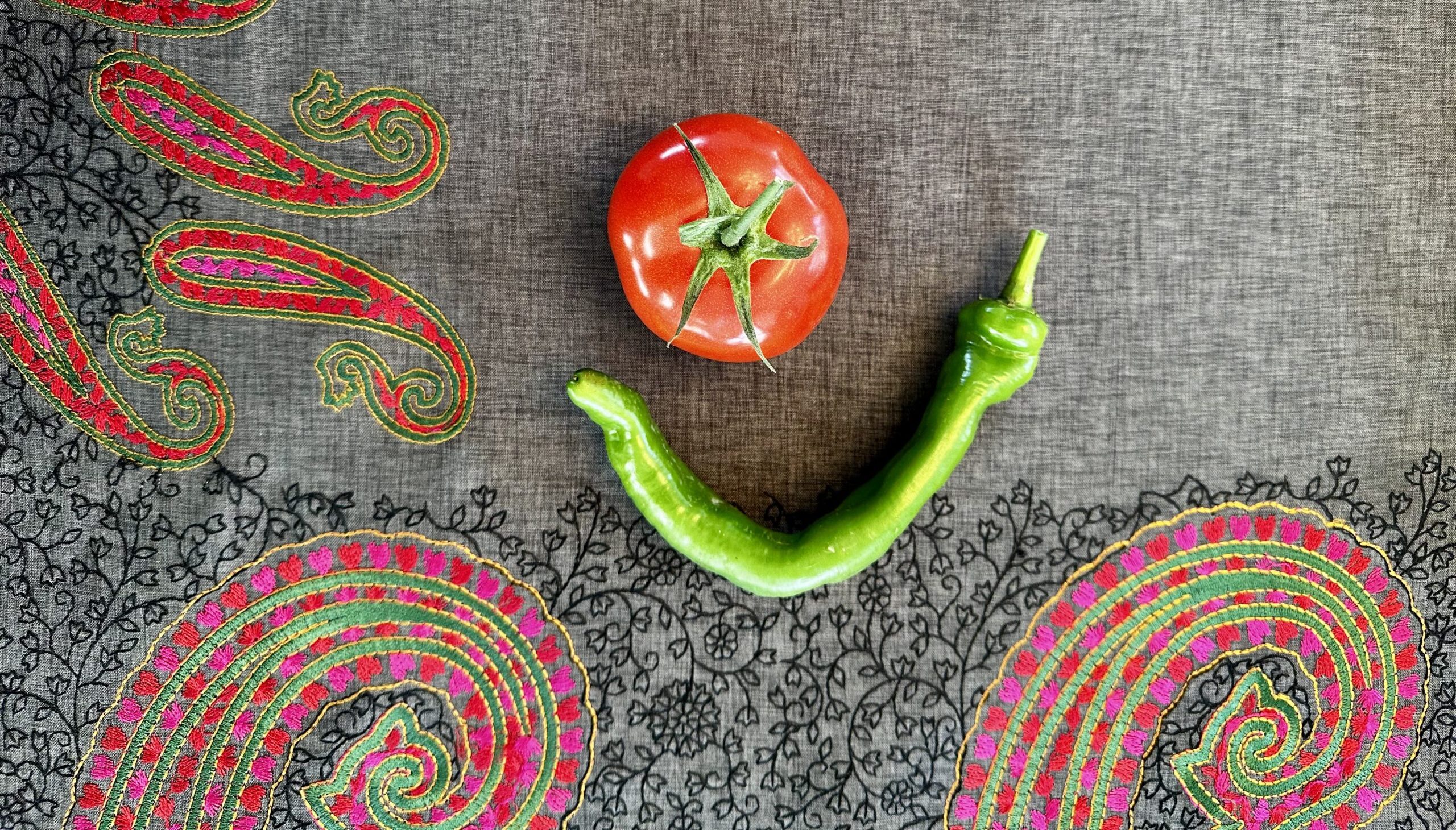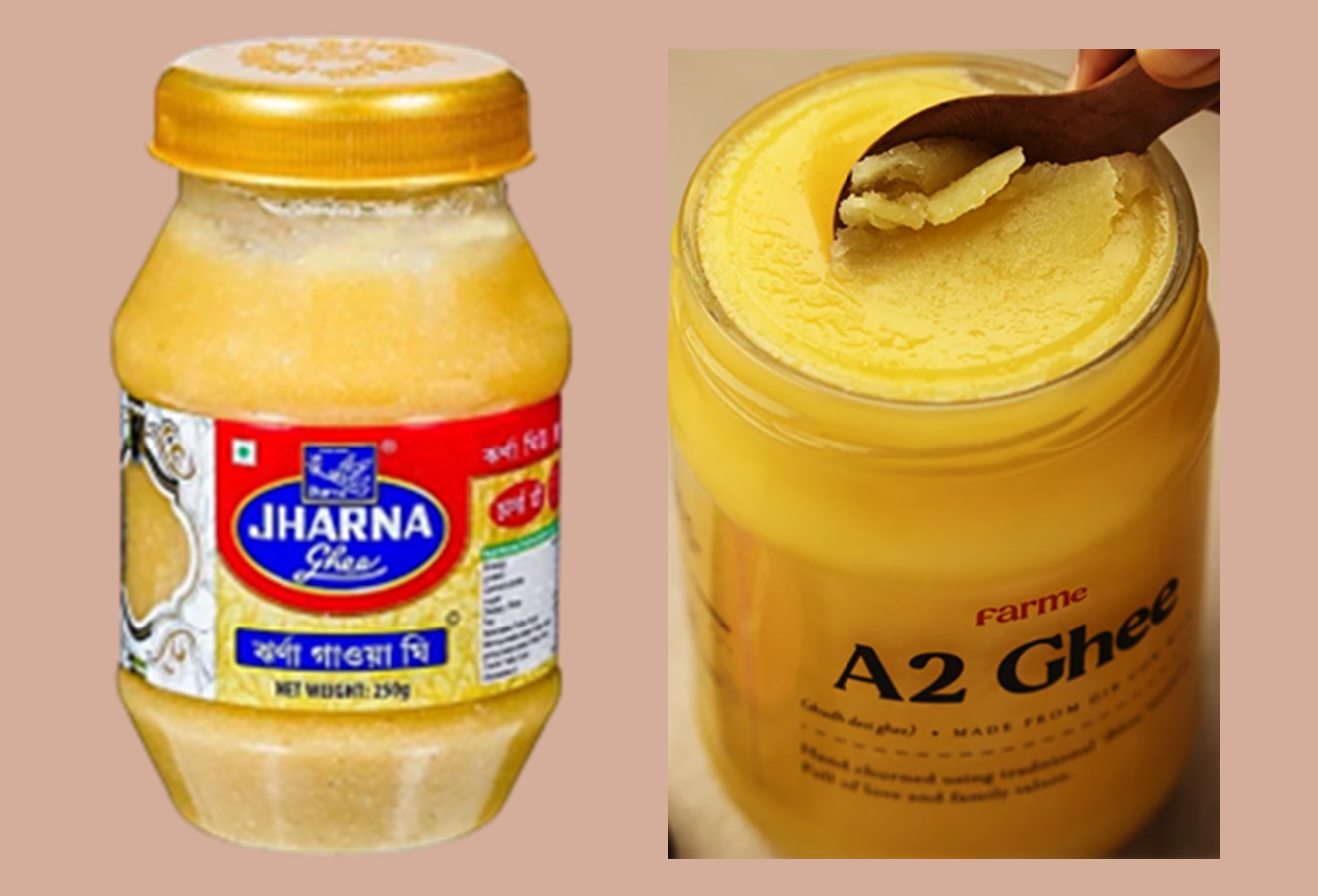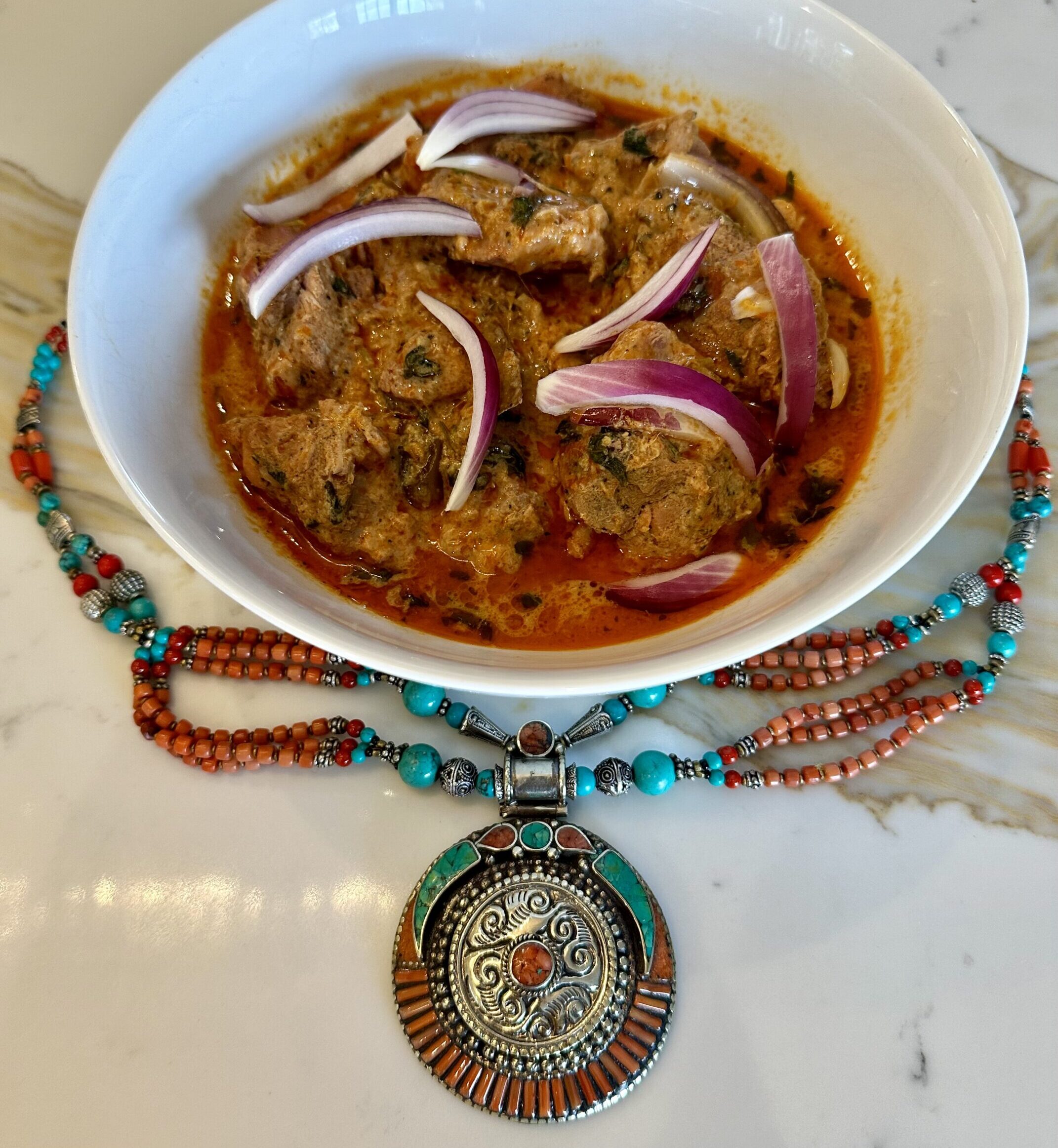
FEATURED INGREDIENT
Ghee – Holy Butter
Ghee has been made in India for centuries and has a long Ayurvedic history. Sourced from cows’ milk, ghee is holy butter for Hindus, and even today it is burned in religious fires. Ghee is made from milk that has been fermented into dahi, a yogurt-like substance, which is then churned into butter.
What is Ghee?
Ghee was originally made to extend the shelf-life of butter. In the tropical Indian climate butter lasted only a few days. An abundant supply of milk meant more butter, and the natural solution was to make ghee which lasted for several months in the hot climate. Ghee is heated to two different temperatures: first, to evaporate the water; and second, to brown the milk solids. This second heating produces antioxidants that extend ghee’s shelf life and give it a deep flavor.
The nutty flavor of ghee was a chef’s delight, and it soon became customary to add ghee to a finished dish. Ghee has a high smoke point, making it ideal for cooking meat, and farmers stared using it instead of oil. The food flavors were exciting and cooking with ghee was adopted throughout western and northern India. Today chefs all over the world are discovering the hidden flavors of ghee. Add ghee to your barbecue or thanksgiving turkey for that special flavor.

Different Types of Ghee
VANASPATI GHEE – A non-dairy product, it is made from hydrogenated vegetable oil. Commonly referred to as Dalda, it is an economical option but has a high content of trans-fats.
REGULAR GHEE – The most common ghee sold in stores; it is a pure milk product. Made using modern methods, the yogurt step is skipped, and the ghee is made directly from the milk cream. Sourced primarily from buffalo milk.
DESI GHEE – Similar to regular ghee but with one key difference, it is made with 100% cows’ milk.
A2 BILONA GHEE – Most cows are a hybrid created from European breeds (Jersey) and produce two milk proteins A1 and A2. The native Indian breeds (Gir and Sahiwal) only produce A2 milk and are the source for this ghee. Made using the traditional bilona process, it uses simultaneous clockwise and anticlockwise churning. An expensive ghee, best for adding flavor.
GAWA GHEE – A BENGALI FAVORITE. The ingredients are the same as desi ghee. The difference is that during the second heating cycle, the temperature is set higher, and it is cooked for longer. This causes the milk solids to caramelize, giving it a grainy texture. The strong nutty fragrance and the caramel flavors make it a flavoring ghee.
Photo: Gir Cows, India. Credit: www.farme.org

